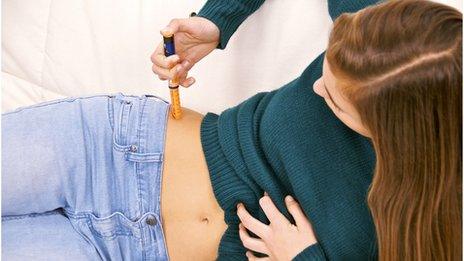Diabetes is no laughing matter, say young sufferers
- Published
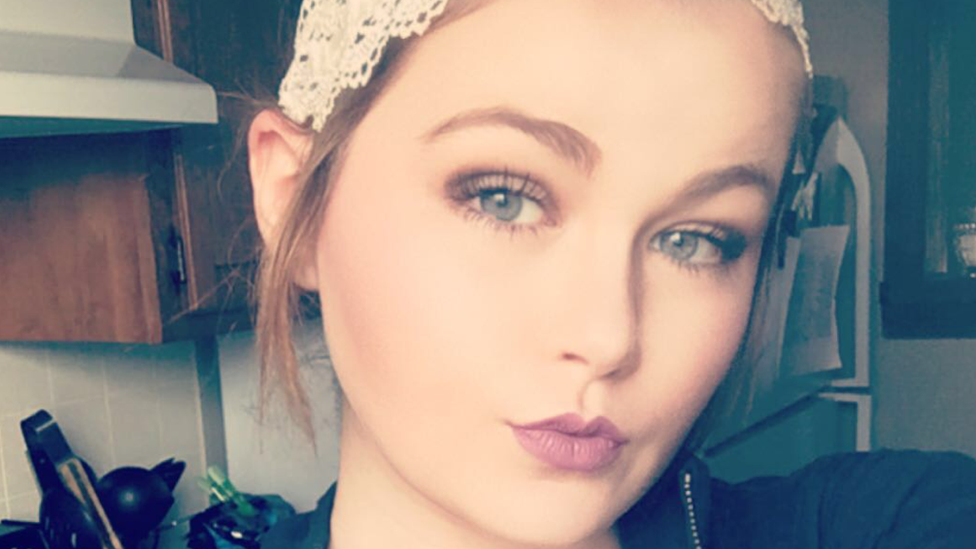
Madeline Milzark told the BBC that the response to her campaign has been 'so heart warming'
A young American woman, infuriated by a social media trend where pictures of cakes and sweets are accompanied by #diabetes, has spelled out what it is really like to have the condition.
On a Facebook post with the hashtag #WhatDiabetesReallyLooksLike, Madeline Milzark, 18, wrote about living with type 1 diabetes, external.
"Diabetes isn't your piece of cake, or that super-sized McDonald's meal with extra fries or anything you see coated with sugar.
"Diabetes is an 18-year-old girl sitting on her bathroom floor shaking and not able to breathe because her blood sugar dropped and praying her grandma's phone is near her and she got the text message to bring some sugar since she's too weak to yell and the whole room is spinning."
Her post has been shared thousands of times around the world.
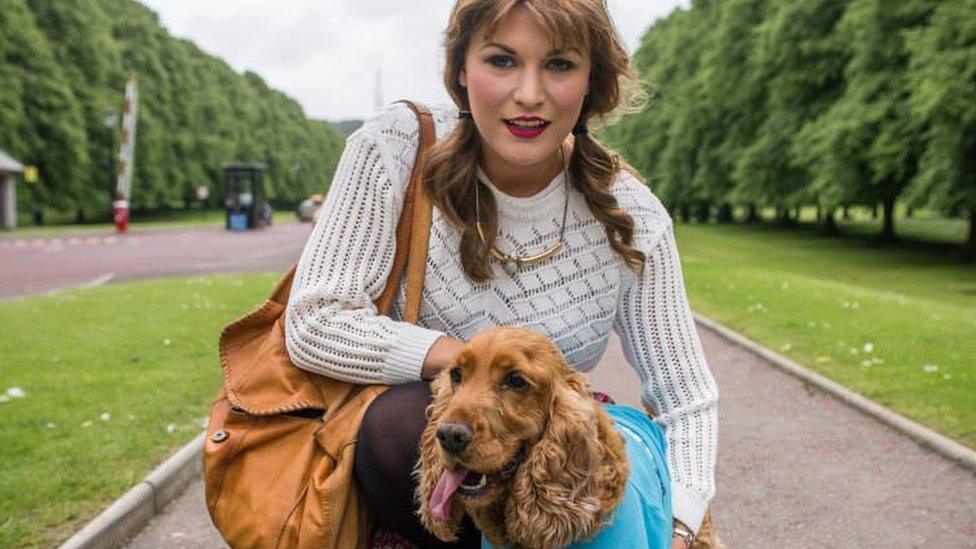
Amy Black, who supports Madeline's campaign, said people 'poke fun' at her illness
Madeline told the BBC: "I originally posted the piece because I had low blood sugar, and I finally had enough. So many people post jokes about my disease, even people on my 'friends' list, yet they don't see me when I'm unconscious or when sugar actually saves my life.
"I'm so extremely happy about the response I've gotten.
"I've had so many people telling me I'm making a difference, sharing their stories with me and thanking me. It's so heart-warming."
Like Madeline, Amy Black - from Belfast - has type 1 diabetes and she supports her campaign: "I agree with it in terms of how she's retaliated. It's something which I've experienced personally and frustrates me a lot. A lot of people trivialise diabetes and don't realise how serious it is.
"People don't seem to see it as a chronic illness - people poke fun at it.
"There's a lot of misinformation and confusion between type 1 and type 2.

Type 1 diabetes
Around 10% of the 3.5 million people with diabetes have type 1
It is most commonly diagnosed in childhood and is not linked to a poor diet or unhealthy lifestyle
It is treated with daily doses of the hormone insulin
People with the condition have to manage their blood glucose levels in order to do the job that the pancreas is not doing
Hypoglycaemia - where blood sugar is too low and there is too much insulin in the blood - can cause shaking, sweating and dizziness or even loss of consciousness
People need to eat something containing carbohydrate to bring their blood glucose levels back to normal
Hyperglycaemia - where blood glucose is too high - doesn't carry the same immediate risks but can increase the chance of developing complications
For more information, go to Diabetes UK, external or the Juvenile Diabetes Research Foundation, external

"There have been times where I've been near people buying ice cream or sweets and people have said that they're 'getting diabetes'.
"I never say anything but it makes me feel irritated. It's so frustrating.
"Sometimes people seem to think I was using it as an excuse, because I don't 'look diabetic'. People think you have to be overweight and over 50 but that's simply not the case. There needs to be more public education."
Online support
Amy was 11 when she was diagnosed. A boy at school had recently found out he had the condition and described his symptoms to the class - increased thirst, going to the toilet more, feeling more tired and growing thinner. These are known as the four Ts of type 1 diabetes, external.
When she started experiencing her symptoms a few months later her mother, who was a nurse, tested her blood.
Now she says stress makes her condition worse, and she has had seizures in her sleep. She constantly has to keep an eye on her blood sugar levels.
Sophie Lane has recently started a blog describing her life with type 1 diabetes, external .
The 24-year-old says people are not aware of what having the condition involves.
"I find it hard when I'm doing an injection. I don't want to move away to do it but people keep asking questions about why I have to do it."
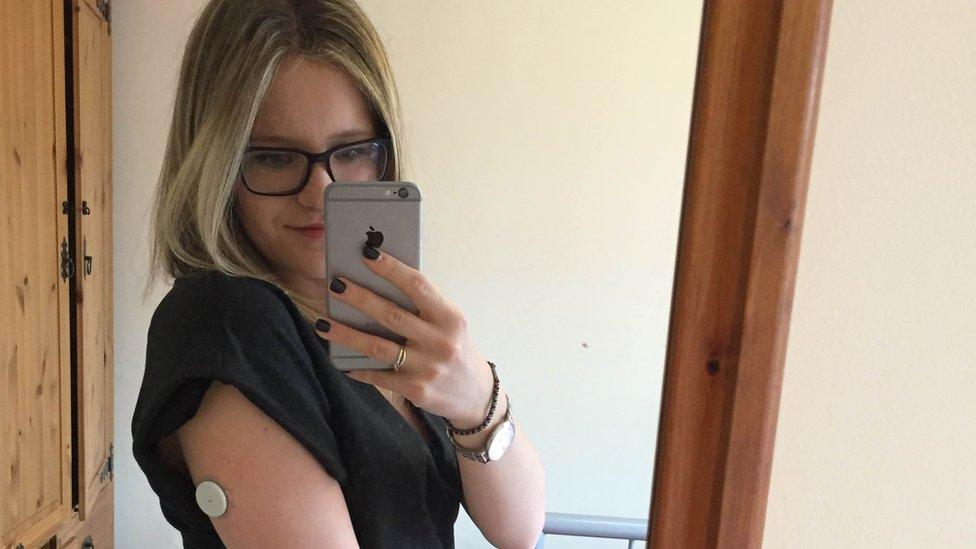
Sophie Lane uses social media to make contact with others who have type 1
Sophie was 12 when she was diagnosed and says: "I was lucky. I had very mild symptoms. My GP was diabetic and she spotted the symptoms."
Despite her symptoms being relatively mild, she was sent to hospital.
Sophie, from Hertfordshire, is now using social media to connect with other people with the condition and find support through her blog and an Instagram account.
"On your own, it's harder but when people have the same issues as you have, it helps," she says.
"It helped me so much. The blog is more for people to read, to understand it more and, for people who have it, to have something to relate to.
"Because it isn't visible, if you don't tell anyone, they won't know. And people don't realise how much it affects you."
Dan Howarth, head of care at Diabetes UK, said: "Every day we hear from people with type 1 diabetes who say that often, people don't understand their condition and think that they brought it on themselves.
"Captioning a plate of food with #diabetes is not helpful.
"What we need is for people to understand the differences between type 1 and type 2 diabetes which may help to avoid this kind of insensitivity and recognise that all types of diabetes are very serious."
- Published14 July 2016
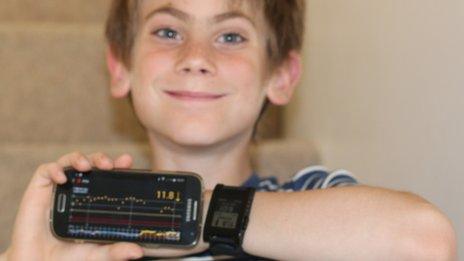
- Published20 April 2016
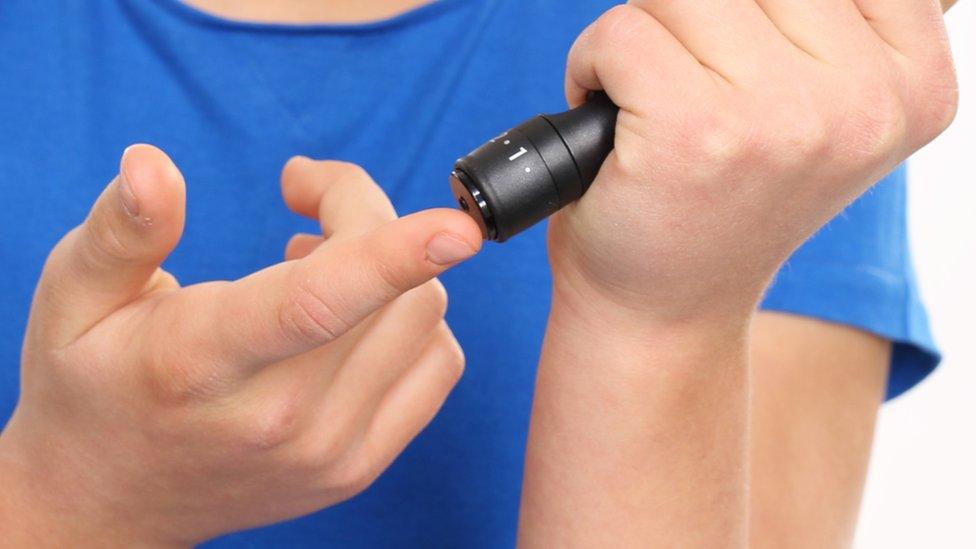
- Published14 November 2012
